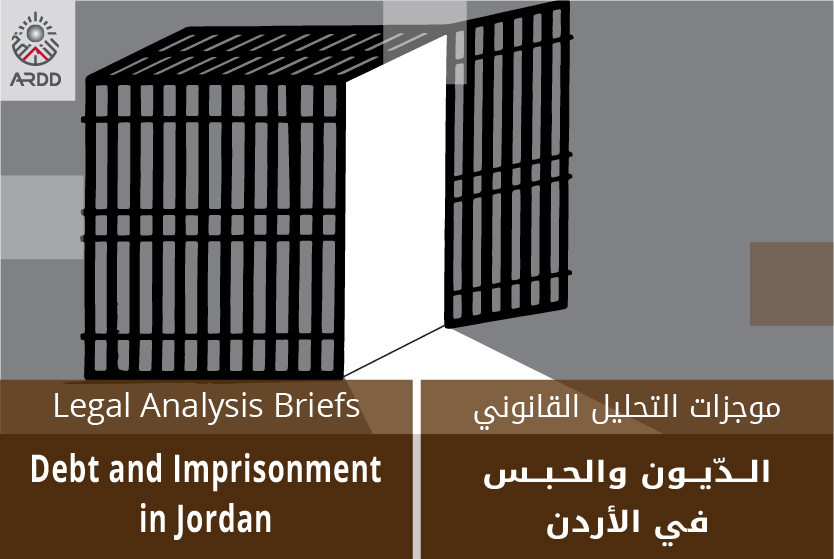Unpaid debt in Jordan is widespread, affecting almost 2% of its population. Most recent estimates regarding people with unpaid debt in Jordan include 157,367 individuals who are wanted in civil debt cases and 30,669 individuals who have issued checks bounced due to insufficient funds.1 Among those facing civil debt cases, 8,7% possess a debt of over JOD 20,000, while the percentage reaches 42% among people who have issued bounced checks.
According to Jordanian legislation, failing to repay debt is a reason for imprisonment. Although the criminalization of debt is a growing phenomenon around the world,2 Jordanian legislation takes it further: the law considers unpaid checks a criminal matter and provides for prison penalties. As per the Jordanian Execution Law no. 25 of 2007 (amended in 2019), individuals who fail to repay their debts for whatever reason, including lack of income, can be sentenced to up to 90 days in prison per debt per year if a formal or informal creditor provides proof of a loan contract and a notice to the debtor in question.
Debt in Jordan is a multidimensional phenomenon that must be understood in all its complexity to formulate adequate solutions. Among policy circles in Jordan and elsewhere, there is a widespread view of simplifying debt due to ‘unhealthy consumption patterns’ by individuals. This approach emphasizes the role of individual responsibility vis-a-vis his/her financial obligations, which translates into the promotion of awareness-raising interventions on ‘financial culture and basics.’3 Instead, as analyzed by ARDD and others, factors such as chronic unemployment, low salaries, rising inflation, insufficient and inadequate financial instruments, along with the absence of stable and predictable inclusive social protection mechanisms and social safety nets that can help families cope with life shocks, help explain why many individuals resort to borrowing money to pay for food, shelter, health treatments, and other basic needs or articles. By the end of 2019, it was estimated that “the average debt ratio for each household amounted to 43% of the household’s income”.


